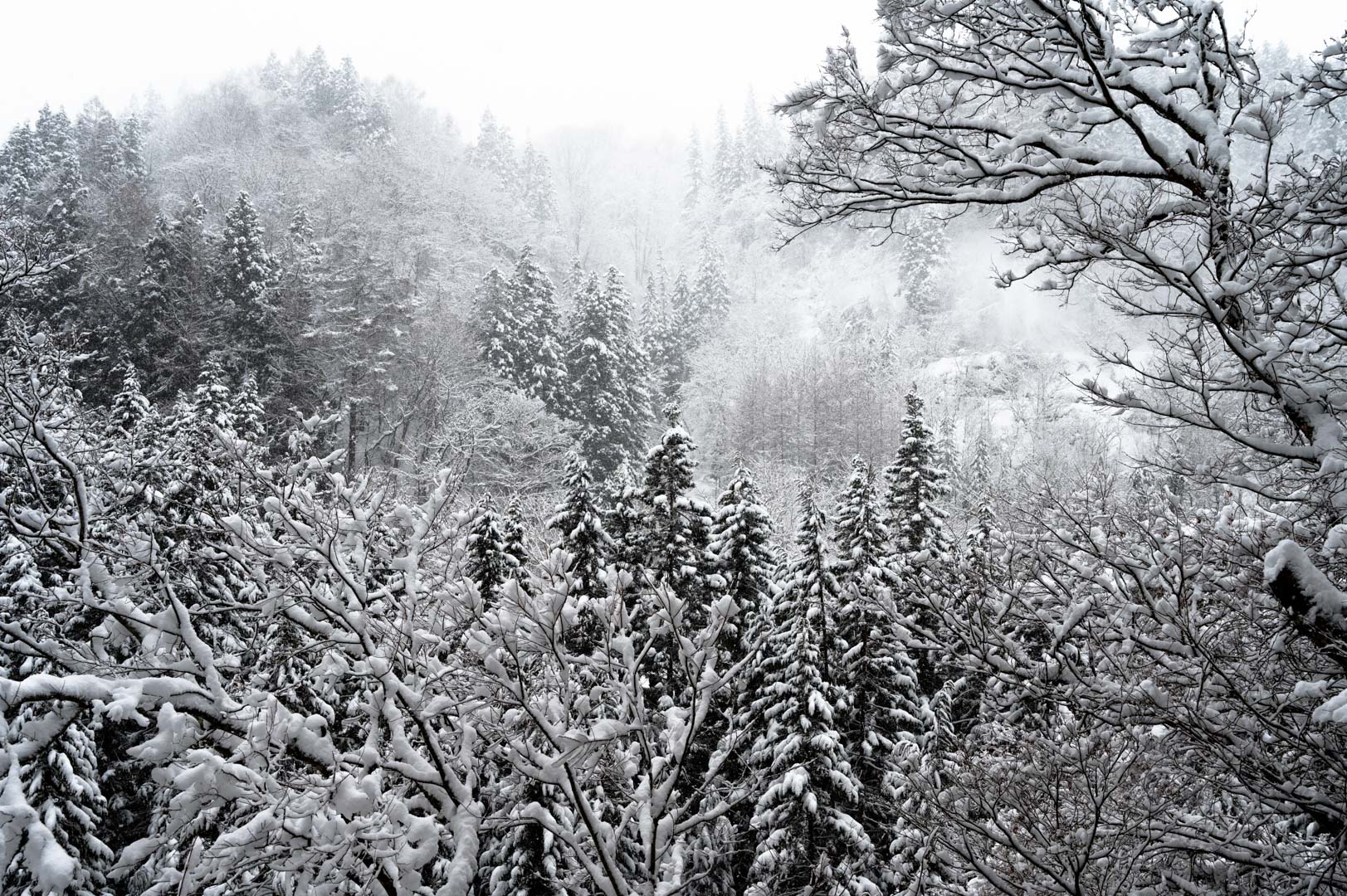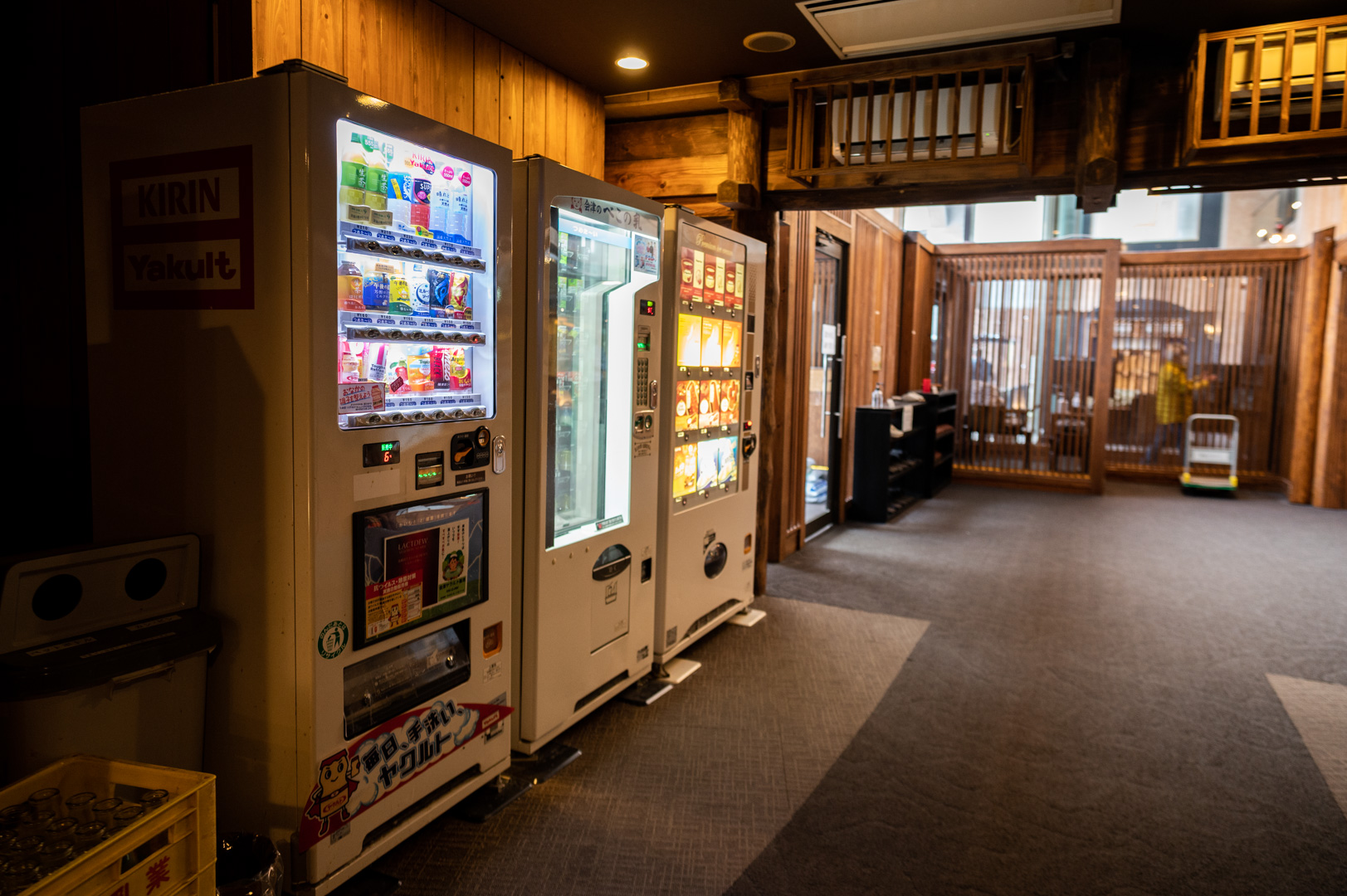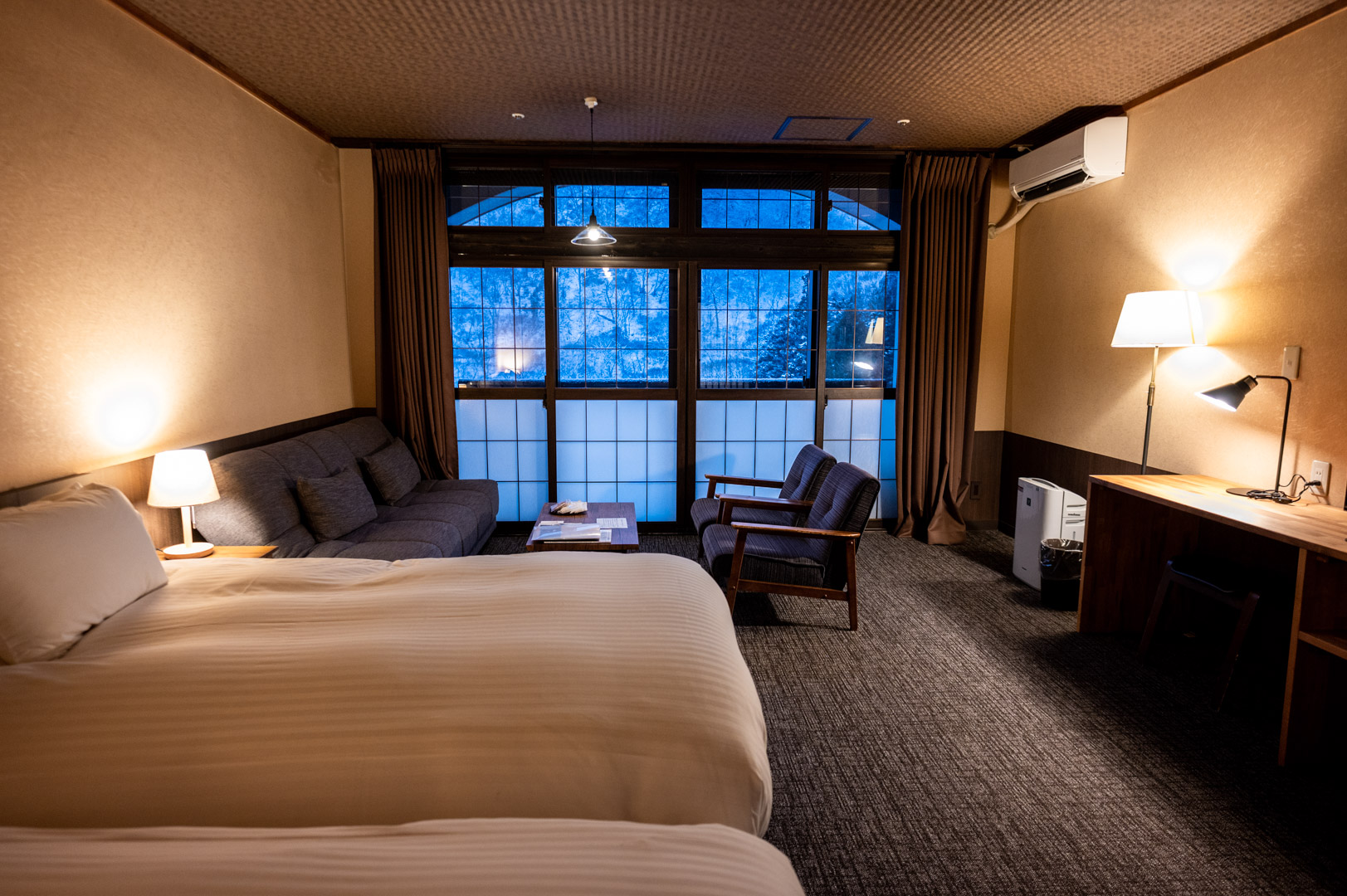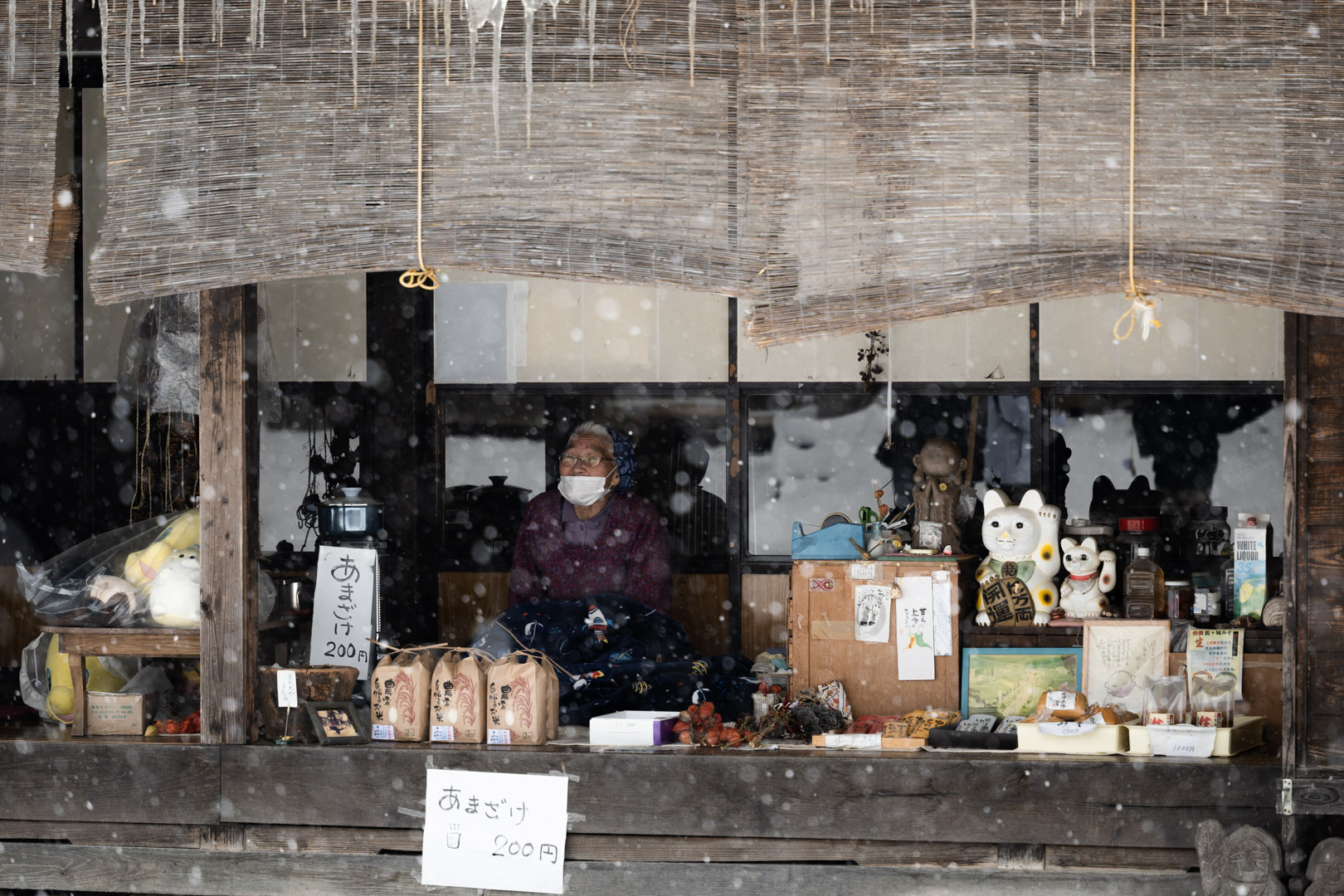Higashiyama Onsen(in Japanese: 東山温泉) is an ancient onsen village resort located just outside the Aizuwakamatsu City, in Fukushima. According to Aizu-Higashiyama Tourism Association the roots of this place go as far back as 1300 years. From a direct quote:
“The onsen area was opened in the late 8th century, and is said to have been established by the Buddhist priest Gyōki, during the Tenpyo era. According to legend, he discovered the spot by following a bird with three legs. During the Edo period, it was popular with the Aizu samurai, and developed as a retreat area. References to the onsen appear in a traditional Aizu folksong written by Ohara Shosuke.”
There are many places in Japan that boast with a long history, but not many claim to date back as far as Higashiyama Onsen. So, let’s have a bit of looksie as to what this place is all about.
Arrival and Season
We had the pleasure of visiting this onsen village for 2 nights just after the New Years in the early 2023. The weather at that time was somewhat of a mix of sleet and snow, while just several minutes of driving further up the mountain road (passes through Higashiyama onsen as the main road) thick blankets and snowfall were waiting to be discovered (few photos of those below), but unfortunately as far as we could say other than marvel the landscape along the roadside there was not much else to do in that direction.
We decided to stay at two different ryokans (well, rather ryokan-hotels.. quite large buildings but with plenty of that traditional ambience we have come to expect and seek):
The first place is called “Kutsurogijuku Shintaki (くつろぎ宿 新滝)”
The second place is called “Kutsurogijuku Chiyotaki (くつろぎ宿 千代滝)”
Now, you might see some similarities in those names.. and indeed, as it turned out a bit later, these are run by the same people/entity. Surprisingly the latter (Chiyotaki) is considered as 3-star hotel while the former (Shintaki) is 4-star in Google. But more on that later!
In 2023 October 29, they both also received “Hot Spring Inn Grand Prize 2023 Tohoku” awards, where the Chiyotaki got 4th place and Shintaki the 6th place.
The First Night – Kutsurogijuku Shintaki
From the two, Shintaki is situated in the valley next to the Yu River that runs through the village. The arrival is also somewhat unique as you will be crossing a small specially made bridge just for the ryokan. The reception was welcoming and smooth. The ryokan has a fair bit of wooden elements blended with some newer and older designs, thus seemed to have a mix of bit of everything.


There is even a table tennis room for guests to play, and a cozy looking sitting area. Roaming around the building was quite nice, with plenty of things to look at (bit of sucker for interesting design elements). Various (traditional flair) design elements are common in ryokan of any size, though got to say.. Shintaki sure had a lot of them.
The onsen were amazing, very cozy and warm design throughout the various baths (indoor and outdoor.. but as always I usually prefer the outdoor ones, especially during winter time). The Yu River runs right next to the outdoor onsen (called “rotenburo”), it has plenty of privacy and can enjoy the river sounds nearby. Photo taking was prohibited, so we have no “original” ones to show for, but you can check some of them by clicking here.
Since we got there quite late, we did not book a dinner and instead drove to the nearby Aizuwakamatsu City. The drive was perhaps 10-15 minutes, which got us quite close to the central area, but what baffled me the most was that Higashiyama Onsen is so close to a relatively big city with a population 100k+, but the two feel like completely different worlds.


For breakfast it was a buffet, we really liked the dining area – great outdoor views, cozy interior design and a tasty warm food. Just all the right elements coming together for a fantastic start to the day.
All-in-all, fantastic place. I think it offers great value for what you get, especially during non-busy periods (outside holidays and weekends). The only downside, if I had to pick one, was that the room was quite small. The Western style rooms for instance always come with single beds (almost never seen an option for double or larger in ryokan.. I’m sure they exist though.. somewhere). Likely of course, there are larger room options but as always come with an heftier price as well. But this also leads us the 2nd night ryokan, Chiyotaki.
The Second Night – Kutsurogijuku Chiyotaki
Since this was slightly cheaper and bit off the main street in the valley (literally just few minutes), the initial expectation was that perhaps somewhat of a downgrade from day 1. Glad to say, we were positively surprised, and honestly felt like the opposite – an upgrade.
Now everyone has their preferences for what makes an attractive, inviting and cozy place. Personally I lean towards wooden elements, interesting but sensible and relatively simple decorations, warm colors and lighting. And well, this place did it for me, had all of that. The lobby area was stunning, I was literally like a headless chicken, wanting to photograph every square centimetre (though no worries, common sense prevailed!).
Since we had an all-day around the area, we also opted for dinner at Chiyotaki. I tend to lean towards the full kaiseki experience (though appreciate the freedom given by buffets), but this time we had a buffet dinner (though I think they also have a booking plan for kaiseki). It was really good though, usually in these mid to high level ryokans the buffet quality is superb.. basically can prepare you own kaiseki, but with just the food you want.

Now the good other part of the coin – onsen and room. Both were fantastic. Especially the room, I think it had to be one of the best room experiences I have had (do prefer futon though as the Japanese beds tend to be small for my height, I am 191 cm). The photos below will showcase the room way better than I can, simply put just expansive, clean, warm and large upper floor windows with views over the whole valley.
The onsen were great and refreshing as well! Again in the public onsen photos are not allowed (usually they also have a sign saying that), this of course makes sense and something we always respect. Thus here is a link to their website that shows the design of onsen. The outdoor onsen on the rooftop was particularly amazing (can see the valley and Aizuwakamatsu city lights on the horizon during the night time). This time though we were able to get a private onsen booked (usually 45-60 minutes and costs around 1k-2k yen). And this private onsen was truly amazing, managed to get few shots if it as well, hopefully conveys the tranquil and uplifting ambience.
Surrounding Areas
We usually tend to improvise our area explorations, and around Aizuwakamatsu there are quite a few interesting places. Within the city itself, the Tsuruga Castle is definitely an interesting place to visit. Nearby is also the massive Lake Inawashiro. Though since our time was bit limited, we on the other hand decided to visit a folk village “Ouchi-juku”. It was windy, cold and snowy.. so just perfect (I hail from Northern Europe and need that yearly dose of snow). This place used to be a post station town during the Edo period (1603 – 1868). The main street is lined with old, thatched roof houses. In early January they already had quite a fair bit of snow there, though shops were open and senior ladies (warmly “obachan” in Japanese) were selling their goods.
Few interesting destination and time it takes by car from Higashiyama Onsen:
Ouchi-juku folk village – 45-50 min
Suehiro Sake Brewery ~ 15 min
Tsuruga Castle ~ 10 min
Sazae Temple ~ 8 min
General Insights:
Kutsurogijuku Shintaki
Website: shintaki.kutsurogijuku.jp/en/
Address: Kawamukai-222 Higashiyamamachi Oaza Yumoto, Aizuwakamatsu, Fukushima 965-0814, Japan
Price range: Room for 2 people is around 18 000 – 32 000 yen / 1person.
* Note that prices can range a fair bit and especially tend to be higher during weekends and public holidays.
This price range also depends largely on meal plan (dinner/kaiseki plan can add fair bit to it).
Kutsurogijuku Chiyotaki
Website: http://www.chiyotaki.kutsurogijuku.jp/en/
Address: Japan, 〒965-0814 Fukushima, Aizuwakamatsu, Higashiyamamachi Oaza Yumoto, Terayashiki−43
Price range: Room for 2 people is around 9 000 – 21 000 yen / 1person.
* Note that prices can range a fair bit and especially tend to be higher during weekends and public holidays.
This price range also depends largely on meal plan (dinner/kaiseki plan can add fair bit to it).
Access Information to Higashiyama Onsen:
Car: Since this place is relatively far north, then depending on other activities and group size, car might not be the best option. It takes a fair bit of time and including toll and fuel costs, then can add up as well. However, perfect for exploring the surrounding the areas with more flexibility.
Car duration (from Tokyo): ~4 – 4.5 hours (Coming from central Tokyo the traffic situation can really influence that, especially weekends and rush hour times)
Public Transport: Aizuwakamatsu is well connected with Tokyo, thus making the travel relatively “painless”. Fastest way would be to use Shinkansen (bullet train) and local train. Public Transport duration (from Tokyo station): 3 – 4 hours. One option is the following route:
Tokyo Station à Koriyama Station (Tohoku Shinkansen) Time: 1 hr 21 min
Koriyama Station à Aizu-Wakamatsu Station (JR Ban-Etsusai Line, RAPID) Time: 1hr 5 min
1) Aizu-Wakamatsu Station à “Aizu Buke Yashikimae” bus stop (あかべぇ) Time: 12 min
You can also call the Ryokan for a pick up service from the Aizu Buke Yahshikimae bus stop (once get there, give them a call and pick up should come in around 5 minutes, according to their website).
2) Taxi from station to any of the ryokan. Time: ~ 15 min.




























